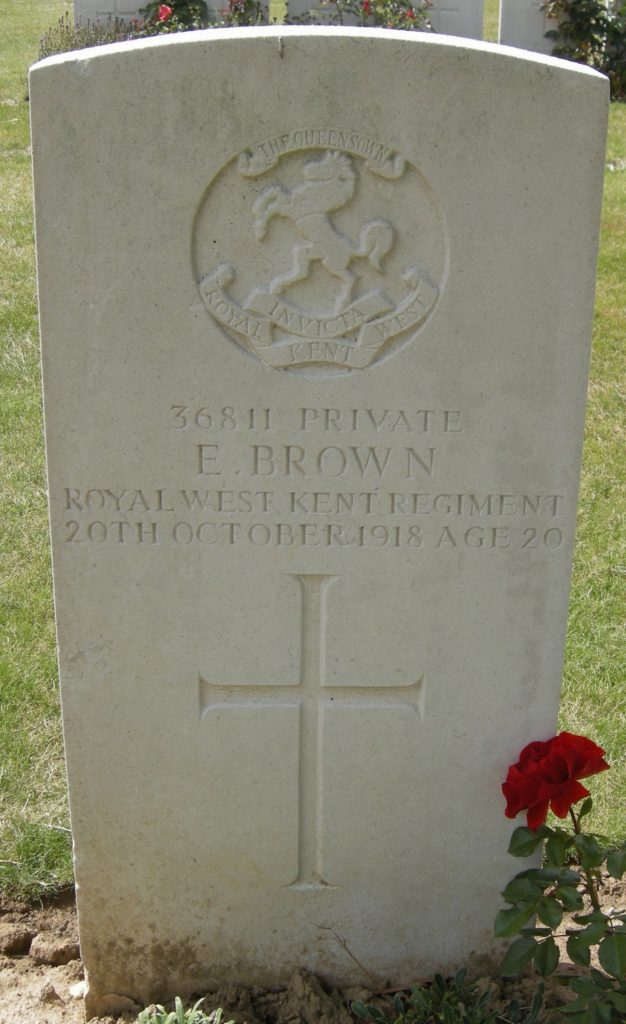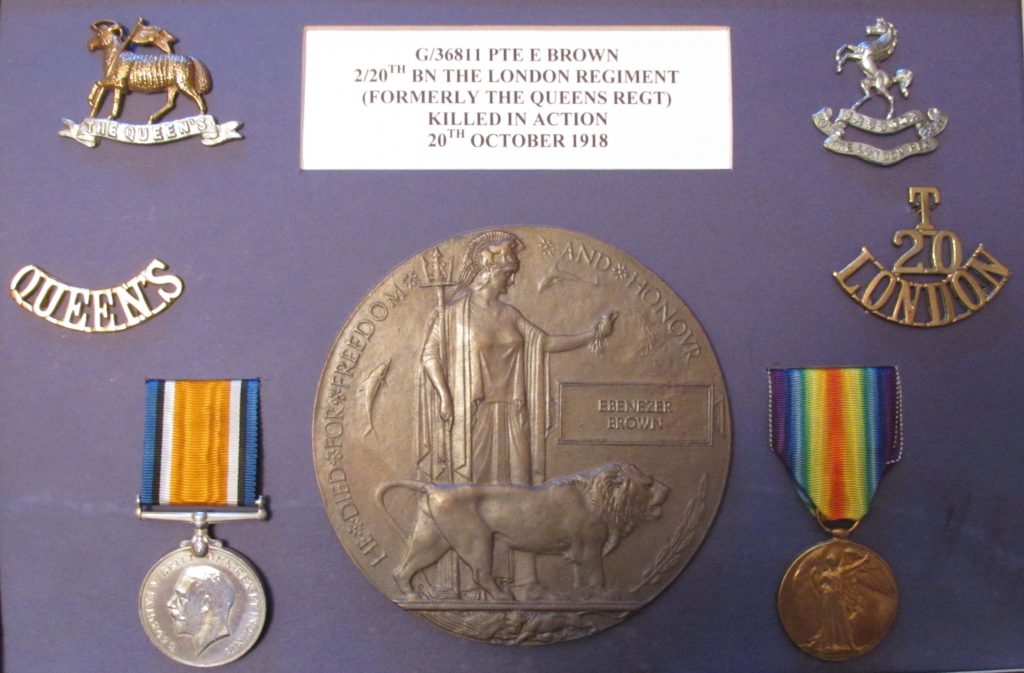G/36811 PRIVATE EBENEZER BROWN
2/20TH (WOOLWICH & BLACKHEATH) BATTALION
LONDON REGIMENT
KILLED IN ACTION
20TH OCTOBER 1918
AGE 20 YEARS

Born at Dawson’s Farm, Spexhall in the last quarter of 1898, Ebenezer was the second son of Edward, a farm labourer, and Mary Anne (née Coleman). Very little has been found of his early life, other than that by mid-1915 he was living with his parents and two siblings in one of the Mill Post cottages that are situated on the Westhall side of the then North Eastern Railway line in Butts Road.
With the introduction of conscription in January 1916, it is possible that Ebenezer had been called to the Colours around the time of his eighteenth birthday in December. This would have been a very traumatic time for his mother Mary as her eldest son Frank was serving in France with the Suffolk Regiment. With Ebenezer now conscripted into the Army and her husband having died at the young age of forty-seven in the fourth quarter of 1916, she must have been at her wits end.
On enlistment Ebenezer was after training, posted to serve as 23449 Private in the Royal West Surrey Regiment (The Queens). At some time after July 1918, he would have been transferred to the 2/20th Londons, this was a pre-war Territorial Battalion of the Royal West Kent Regiment who had just returned to France after previously fighting on the Salonika Front. Interestingly his next service number would be within 47 digits of his brothers Franks new number of G/36858, allocated after he had been transferred from the Suffolk’s to the 11th Battalion, Royal Sussex Regiment. How these two numbers with the ‘G’ prefix were so close remains a mystery.
The actual date Ebenezer transferred the 2/20th Londons is not known but the Battalion was to take part in actions that later became known as the Hundred Days Offensive, this saw the end of static trench warfare with the Allies pushing the Germans back towards the borders of their homeland. On the 20th October 1918, the day of Ebenezer’s death, the 2/20th were involved in what was to become known as the Battle of the Selle. Now part of the 62nd Division the 2/20th were tasked to be part of the flanking force to capture the riverside town of Solesmes. Leaving their start line at 07.00 hrs they made good progress, eventually joining up with troops of the Guards Division on the left of the advance. By 16.00 hrs they were in position to assist in the breaking up of a strong German counterattack which they duly achieved. By the end of the day when the Battalion roll was called, it was found that their losses for the day were considered relatively light with twenty-two having been killed including young Ebenezer and eighty-seven of wounded.
After the battle, Ebenezer’s body was recovered, and he now lies with seven hundred and three of his comrades in the Romeries Cemetery extension in France.
It was not until the 3rd December, a full three weeks after the Armistice, that the Halesworth Times made the announcement of Ebenezer’s death. With the loss of her husband, followed by news of her second son’s loss, it must have been devastating for Mary. Research shows that for the loss of her son in April 1919 she received a one-off payment of £9 4s 2d (approx. £9.21p) followed by a weekly pension for life of 7s 6d (approx. 38p). This would have increased as the years went by until Mary passed away in April 1938.
As well as the monetary compensation Mary would have been able to receive his medal entitlement of the British War and Victory medals and Memorial Plaque with Scroll.
The medal pair and plaque are now in a private collection.

